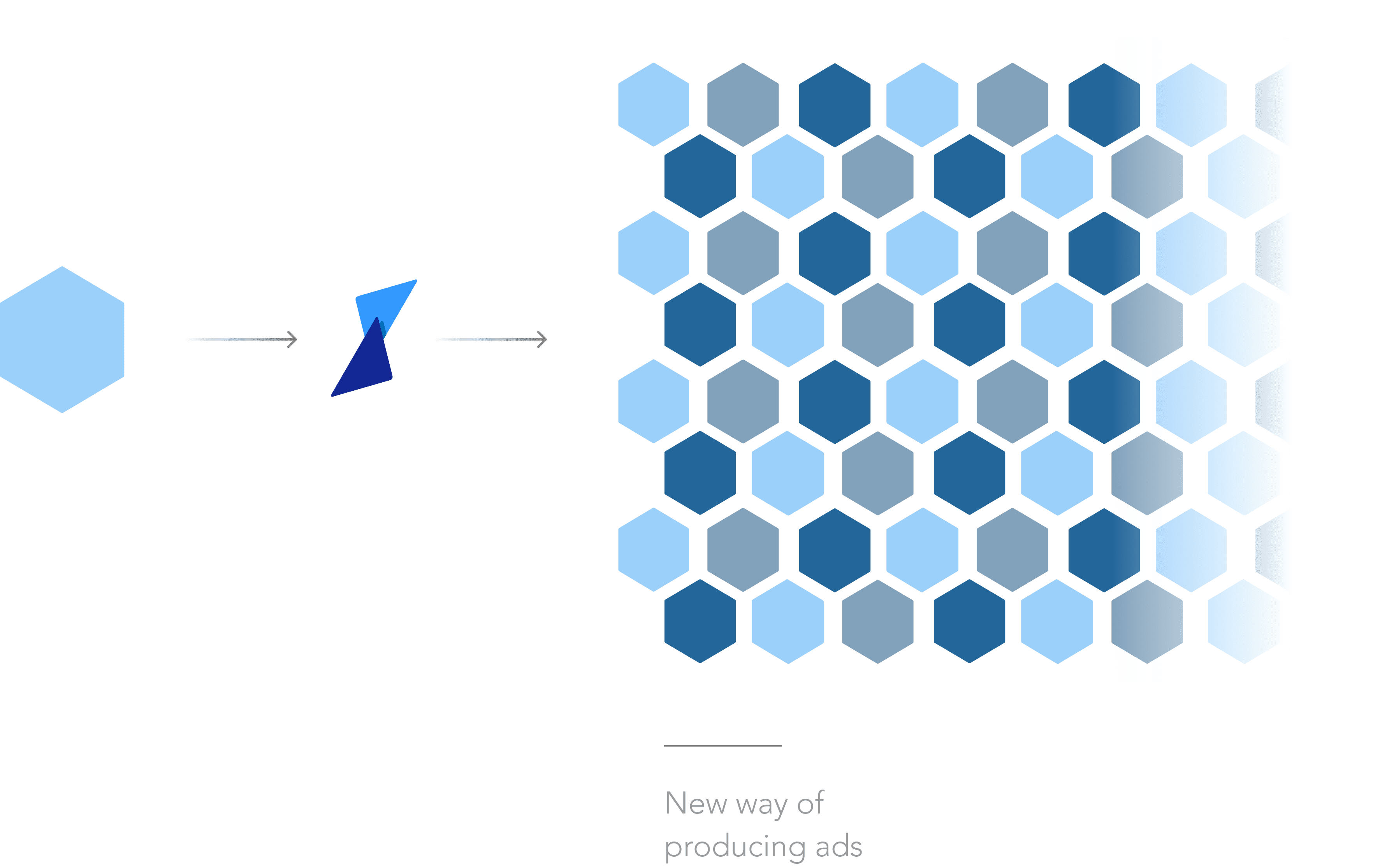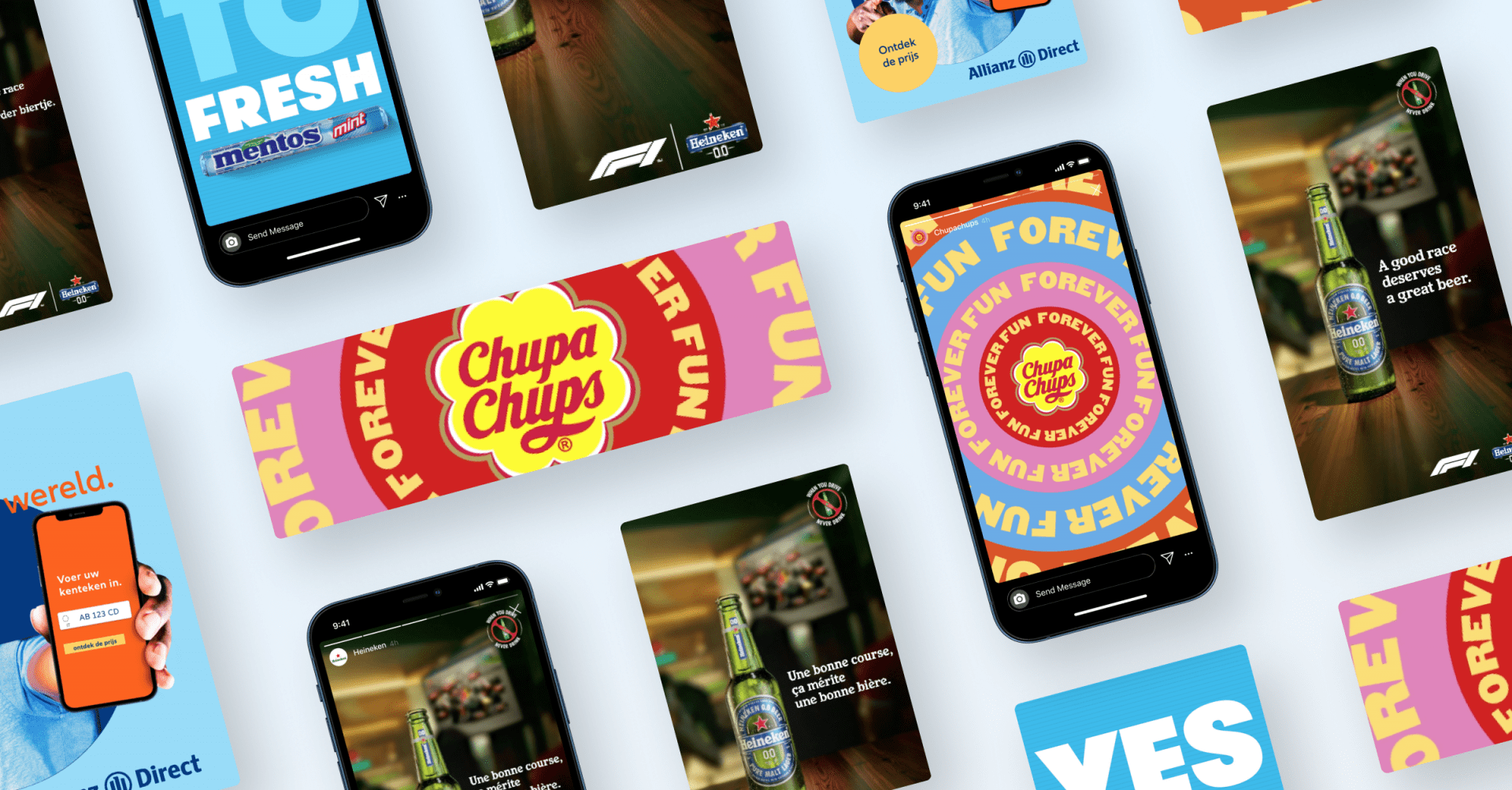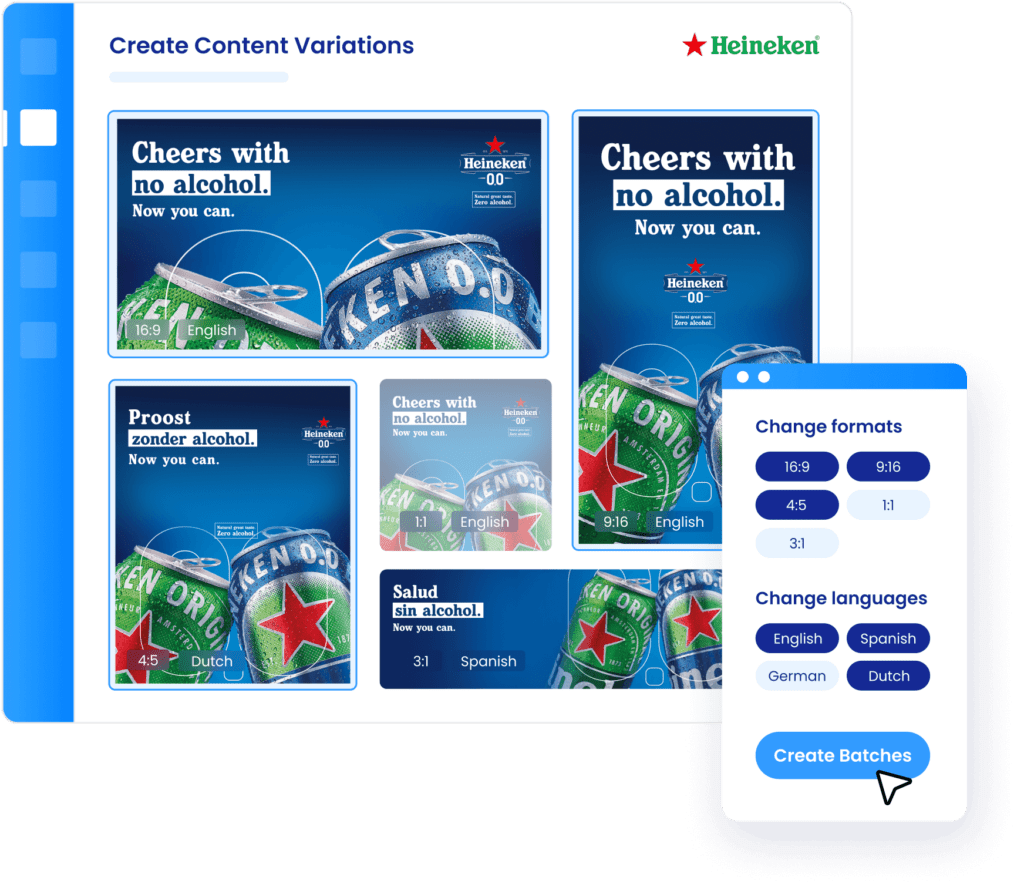If you are a CMO, creative lead or brand manager, you already know what scaling your content production can do for your business in a time of rapid digital growth. You’ve probably even told your organisation to get you there already.
So why is your move to Creative Automation coming along so slowly, even though you may have been talking about the need to scale production for years? It might be because you and your creative and marketing management team have yet to take a sufficiently active role and make the benefits known from the top down.
Your customers want better content and your marketing team needs an efficient way to provide this. A modern platform can help time-strapped teams manage high content volumes by empowering them to automate repetitive tasks.
With consumers’ ever-decreasing attention, the creative conceptualising and production space will be key to drive performance. These challenges, together with the demise of the cookie, are pushing advertisers worldwide to rethink their approach to personalisation and how to be relevant with fewer signals from their audience.
Your options for scaling content production
More and more companies need to mobilise dozens of teams across design, marketing and production to scale their content production practice.
On top of it, more and more brands are swimming in a sea of sameness, crafting ad experiences that lack context, connection, and brand relevance which, in turn, triggers ad fatigue.
If you want to scale your creative production process to address these issues, you must be aware by now that to mobilise your design and marketing teams for the challenge, adding headcount won’t cut it and slowing down production certainly isn’t an option.
Fortunately, there is a solution. It involves using Creative Automation alongside sustainably paced hiring. This approach to scaling your content production requires an excellent set of platforms, experimentation, and shifting your mindset to a new way of working.
Why is Creative Automation no longer optional for creative leads and marketing managers?
> A modern platform can help time-strapped teams manage high content volumes by empowering them to automate repetitive tasks.
> With consumers’ ever-decreasing attention, your audience’s expectations for personalised content are higher than ever, and the creative production space will be key to drive performance.
> Creative Automation scales your asset production by automatically adapting and changing certain aspects of your content such as size, format, CTAs and other graphic elements.
Common Creative Automation misperceptions
We are already seeing leading brands and agencies making the move towards Creative Automation when they digitally advertise and reduce costs while producing premium content. But not everybody has made the move, which is why we want to explore the potential reasons why.
Myth #1: “It’s the same as automating creativity.”
Automation is an irrelevant term to your average creative team member because it’s ambiguous. For many creatives, automation translates into the need for more creative assets so marketers can deliver more asset variations.
Something to note is that the use of the term creative in Creative Automation is often misunderstood, with confusions such as the idea that it automates the creative process and, therefore, replaces creative teams.
Creativity is not one of the automatable aspects of this process and therefore, is not under any threat. In fact, it’s quite the opposite. It’s about freeing the designer from uninspired monotonous tasks and empowering the marketer to serve themselves, allowing more time to focus on higher value strategic activities. It gives creativity and creative people the mindspace they need to flourish.
To avoid misclassifying Creative Automation as part of the creative process, we suggest that the term should be tweaked to showcase exactly what it can automate: the production process.
Takeaway: Define and clarify Creative Automation for your organisation, and activate your leadership teams to disseminate its importance from the top down.
Myth #2: “It’s not for my industry.”
Producing content is flourishing in every industry. In a recent survey of content strategists, the most common industries were technology (27%), education (19%), agencies (16%) and government (7%).
It depends on the type of content you’re creating but first, understand that the value of Creative Automation comes from simplifying your work.
For instance, if you want to create a video ad or banner, you can quickly edit and create variants for testing whether you need colors, logos, copy, layout, scene sequencing or other elements. So the value is in doing this fast and without asking your designer for a change every time. After all, in any business, there’s a need to keep up with the speed at which the industry moves.
At Storyteq, even if you don’t have a team of creatives, we have a dedicated team of experts, the Managed Service team, who can work elbow to elbow with your team to get things done.
Takeaway: Understand your goals and how your growth impacts your industry. Transforming workflows future-proofs your company especially when you’re delivering hundreds and thousands of variations of the same asset for the same campaign – this is when efficiency is key.
Myth #3: “It’s difficult to implement.”
Switching from one tool to another or adopting a new one altogether is not always easy, so don’t instantly make the change; allow for a transition period instead. Use that time and learnings to collect feedback, understand the platform’s value and functionality, and stay objective.
It’s also important to consider the entire value chain as one integrated flow. From ideation all the way up to ad optimisation, everything is fully connected. That doesn’t mean you need to completely re-organise the way you’re doing things, but you must stimulate different teams (or external agencies) to work together. It can be as easy as setting up one template that you can repurpose based on your campaign requirements.
Step 1: Create master templates for banners or videos which are tailored to your campaign by changing the dynamic fields (swappable elements) that you need.
Step 2: Before pushing the video ad to your channels, download one example to check if everything is on point.
Step 3: Create different ad variations and push them to the ad channels.
In Storyteq terms, our Customer Success team will guide you with embedding our platform in your workflow and help the creative teams think in templates. We then also train the teams in a way that suits your organisation best. This usually takes two 90 minutes training sessions and follow-up sessions for Q&A. We follow up constantly during the first months to make sure adoption takes place with continuous attention and advice.
Takeaway: Implementing Creative Automation can yield some great results and will help you stay ahead of the curve as more and more businesses ride the dynamic creative wave. As marketers, it all comes down to personalising your messaging and the way your target audience likes to consume content. Chances are, your competition is already making great use of it in their marketing strategy, so get in that meeting room and start convincing your stakeholders before you’re forgotten.
Myth #4: “We cannot increase company expenditure by investing in new technologies.”
The cost of manual work is too much. In the existing ad creation process, every adaptation opportunity comes at the cost of a full production cycle. It is the longer-term impact on company cost that must be considered when deciding to introduce a Creative Automation platform into your workflows.
With the Storyteq platform, you can increase your creative production without needing to increase your headcount. In other words, our platform can save you money, time and creative energy. All packages include the one-time setup fee and a monthly recurring license fee which varies based on platform usage or extra support requests from our Managed Service team.
Takeaway: The cost to run the platform is surpassed with extreme speed by the savings made, when compared to how your company would before create content at scale.

Remember, these are Creative Automation myths:
- “It’s the same as automating creativity.”
- “It’s not for my industry.”
- “It’s difficult to implement.”
- “We cannot increase company expenditure by investing in new technologies.”
Wrapping up
Myths are only created because many people are talking about something. Creative Automation is worth talking about, but we wanted to make sure justice is being done on its behalf.
Curious to find out more about the ins and outs of Creative Automation? We recently published an all-encompassing resource with insights from leaders across industries like gaming, finance, consumer brands, agencies and more to help you execute a winning strategy.
Prepare for transformation.





